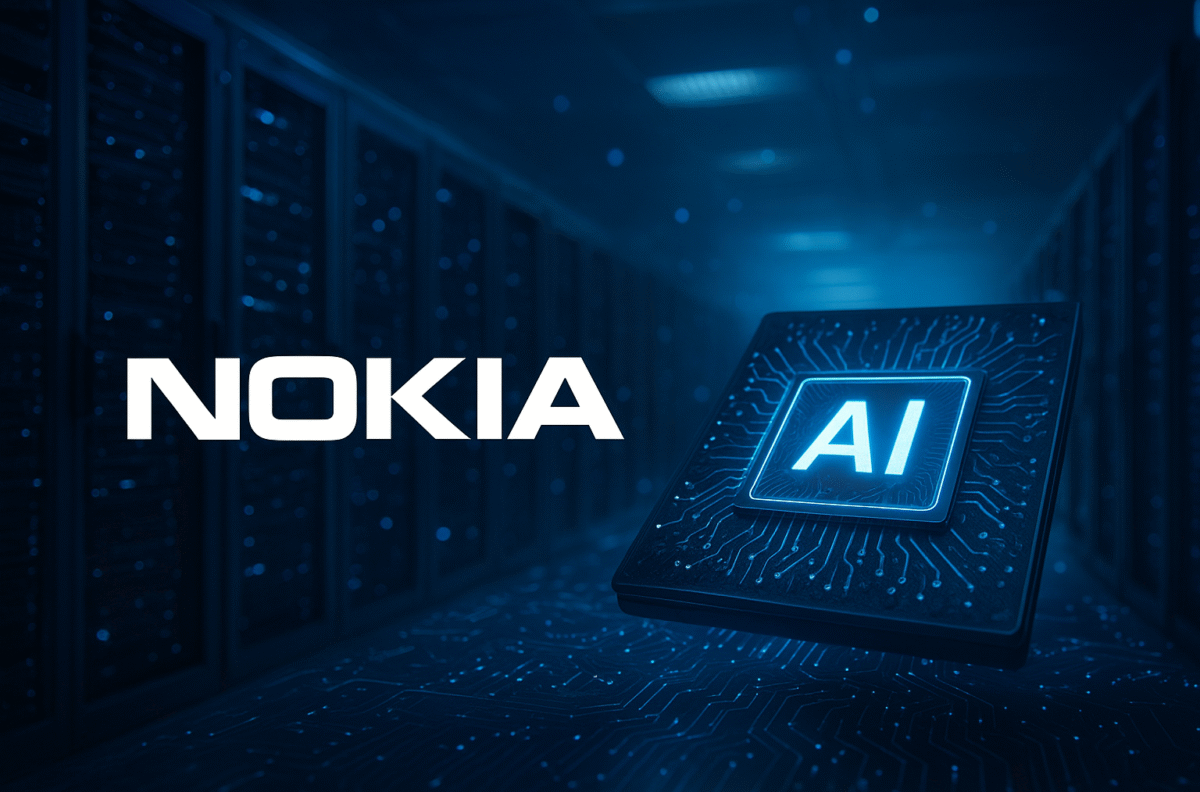Can Nokia’s AI-fueled comeback transform its future? Analysts see a powerful turnaround ahead

Can Nokia’s AI-fueled comeback transform its future? Analysts see a powerful turnaround ahead
Nokia appears to be charting a new course — one that could redefine its position in the global technology landscape. The Finnish telecom giant, once known primarily for its radio access equipment, is now drawing strong investor attention for its growing exposure to the booming artificial intelligence (AI) data center market.
In a major boost to investor confidence, Jefferies has upgraded Nokia Oyj’s rating from “hold” to “buy,” while raising its price target from €4.50 to €6.60. The investment firm highlighted that Nokia is successfully transitioning from a slow-growth, radio-centric company into a high-value player in the AI-powered networking space.
According to Jefferies, this transformation is being powered by Nokia’s Network Infrastructure segment, which is witnessing steady and sustainable growth. The brokerage forecasts that Nokia’s gross margins will rise from 45% in 2026 to 46% in 2027, supported by strong performance across optical, IP, and fixed networks.
Jefferies analysts project Nokia’s total revenue to reach €19.86 billion in 2025, rising to €22.20 billion by 2027. Earnings per share are also expected to grow consistently, from €0.28 in 2025 to €0.40 in 2027, reflecting stronger operational efficiency and expanding profit margins.
A key driver of this optimism is Nokia’s Optical Networking division, which grew 19% year-over-year in the third quarter of 2025. The recent merger with Infinera Corp. — a strategic move that deepens Nokia’s capabilities in optical technologies — comes at an opportune time when AI data centers are demanding more bandwidth and connectivity.
The combined Nokia-Infinera entity is now in a better position to challenge long-time industry leader Ciena. Moreover, Infinera’s established partnerships with hyperscalers and expertise in indium phosphide chip fabrication in the U.S. are seen as strategic assets that could accelerate Nokia’s integration into AI-driven infrastructure projects.
Roughly 29% of Nokia’s Optical Networking revenue in the last quarter came from data center clients, signaling a clear shift toward enterprise-scale AI deployments. The company has also begun shipping its 800G ZR/ZR+ transceivers to a U.S. hyperscaler, enhancing its competitive edge in next-generation connectivity solutions.
Meanwhile, Nokia’s Cloud & Network Services division continues to deliver impressive performance, with gross margins rising to 49% in Q3 2025 — a sharp increase from 41% a year earlier. Jefferies attributes this to Nokia’s growing traction in 5G Core implementations and effective cost-cutting strategies.
The Mobile Networks segment, long a laggard, has also shown signs of stabilization. After years of decline, it posted a 4% year-over-year increase in sales in the third quarter of 2025, suggesting a slow but steady recovery.
Overall, Jefferies expects Nokia’s total revenue to grow by 5.3% in 2026 and 6.2% in 2027, largely supported by rising global investment in AI infrastructure. Analysts believe that the company’s upcoming Capital Markets Day on November 19 could serve as a major catalyst, as new CEO Justin Hotard is expected to unveil a roadmap for expanding Nokia’s data center footprint and improving profitability across its core businesses.
With AI reshaping global technology, Nokia seems poised to ride the next big wave — powered by innovation, strategic partnerships, and a renewed focus on high-growth digital infrastructure.
FAQ
Q1: Why did Jefferies upgrade Nokia to a “buy”?
Jefferies upgraded Nokia due to its increasing exposure to AI-driven data center growth and improving financial outlook, particularly in its Network Infrastructure segment.
Q2: How is Nokia benefiting from AI technology?
Nokia’s merger with Infinera has strengthened its position in optical networking — a critical component for AI data centers that require high-speed, low-latency connectivity.
Q3: What are Nokia’s revenue projections for the next two years?
Jefferies projects Nokia’s revenue to reach €20.9 billion in 2026 and €22.2 billion in 2027, with steady profit growth driven by high-margin infrastructure services.
Q4: What challenges does Nokia still face?
While Nokia’s infrastructure units are growing, its Mobile Networks division remains under pressure, with profitability expected to stay in the low single digits through 2027.
Q5: When is Nokia’s next major investor event?
Nokia’s next major event is its Capital Markets Day on November 19, 2025, where CEO Justin Hotard is expected to unveil new growth and AI integration strategies.


